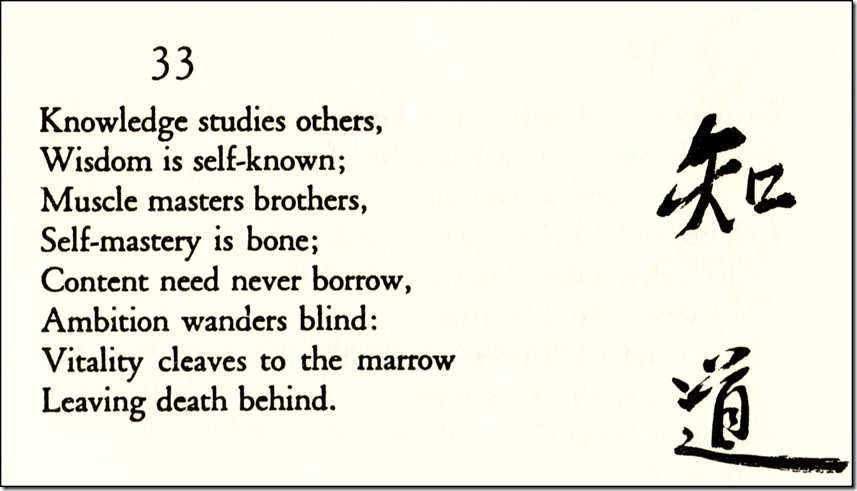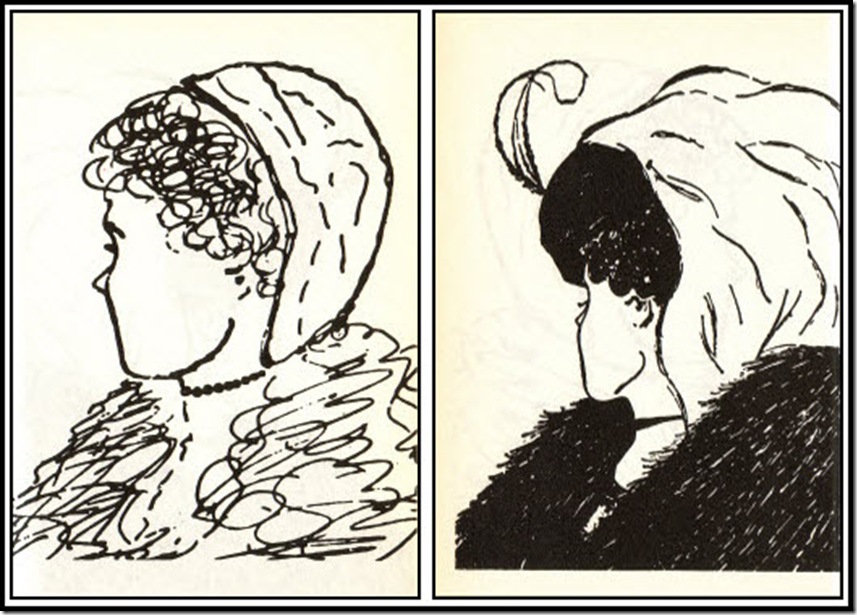The Balancing Act of Awareness
/This is my sixth blog post tagged Karma since I promised to discuss it directly and indirectly on my blog throughout the year after declaring KARMA my theme word for 2010 back on the first day of January—surprisingly now almost six months ago.
Lately I have been contemplating the importance of awareness, and far more specifically, the constant challenge involved in maintaining the balance between our self-awareness and our awareness of others.
The three sections below are each prefaced by a chapter from Witter Bynner’s “American poetic” translation of the Tao Te Ching. I certainly do not wish to offend anyone’s religious sensibilities—I am using these references in a philosophical and secular sense.
Since I also try to balance my philosophy between Eastern and Western influences, Lao Tzu won’t be the only “old master” cited.
Additionally, please note that the masculine language (e.g., “he” and “man”) used in the selected quotes below is a by-product of the age of the original texts (e.g., the Tao Te Ching is over 2,500 years old). Therefore, absolutely no gender bias is intended.
Self-Awareness
“Nothing can bring you peace but yourself.” Ralph Waldo Emerson wrote this sentence in the closing lines of his wonderful essay on Self-Reliance, which is one of my all-time favorites even though I first read it over 25 years ago. My favorite passage is:
“What I must do is all that concerns me, not what the people think. This rule, equally arduous in actual and in intellectual life, may serve for the whole distinction between greatness and meanness. It is the harder because you will always find those who think they know what is your duty better than you know it. It is easy in the world to live after the world’s opinion; it is easy in solitude to live after our own; but the great man is he who in the midst of the crowd keeps with perfect sweetness the independence of solitude.”
Emerson’s belief in the primacy of the individual was certainly not an anti-social sentiment.
Emerson believed society is best served whenever individuals possess a healthy sense of self and a well-grounded self-confidence, both of which can only be achieved if we truly come to know who we are on our own terms.
Writing more than 150 years later, and in one of my all-time favorite non-fiction books, The 7 Habits of Highly Effective People, Stephen Covey explains the importance of first achieving independence through self-mastery before successful interdependence with others is possible. “Interdependence is a choice only independent people can make,” Covey explained. “Dependent people cannot choose to become interdependent. They don’t have the character to do it; they don’t own enough of themselves.”
“Private victories precede public victories,” wrote Covey, explaining that the private victories of independence are the essence of our character growth, and provide the prerequisite foundation necessary for the public victories of interdependence.
Of course, the reality is that self-awareness and independence cannot be developed only during our moments of solitude.
We must interact with others even before we have achieved self-mastery. Furthermore, self-mastery is a continuous process. Although self-awareness is essential for effectively interacting with others, it provides no guarantee for social success.
However, as William Shakespeare taught us by way of the character Polonius in Hamlet:
“This above all—to thine own self be true;
And it must follow, as the night the day,
Thou canst not then be false to any man.”
Other-Awareness
Empathy, which is central to our awareness of others (i.e., other-awareness), is often confused with sympathy.
Sympathy is an agreement of feeling that we express by providing support or showing compassion for the suffering of others. Empathy is an identification with the emotions, thoughts, or perspectives expressed by others.
The key difference is found between the words agreement and identification.
Sympathy is the ability to relate oneself to others. Empathy is the ability to see the self in others—not your self, but the unique self within each individual. Sympathy is about trying to comfort others. Empathy is about trying to understand others.
“Empathy is not sympathy,” explains Covey. “Sympathy is a form of agreement, a form of judgment. And it is sometimes the more appropriate response. But people often feed on sympathy. It makes them dependent. The essence of empathy is not that you agree with someone; it’s that you fully, deeply, understand that person, emotionally as well as intellectually.”
Although both sympathy and empathy are important, empathy is more crucial for other-awareness.
We often simply act sympathetic when in the presence of others. Therefore, sympathy is sometimes all too easy to feign and can easily remain superficial. Empathy is less ostentatious, but can exert a far more powerfully positive influence over others.
In the words of Roy Schafer, who emphasized the role of narrative (i.e., the interpretation of our life stories) in psychoanalysis:
“Empathy involves the inner experience of sharing in and comprehending the momentary psychological state of another person.”
Balanced Awareness
Although it is easy to be aware of only our good qualities, while at the same time, only be aware of the bad qualities of others, these convenient blind spots in our awareness can also become our greatest teachers.
Borrowing the wise words of Socrates, which thankfully were recorded for us by Plato:
“The unexamined life is not worth living.”
Examining our awareness, and shifting its focus when appropriate between self-awareness and other-awareness truly requires a delicate balancing act.
When we become preoccupied with self-awareness, our consideration for others suffers. Likewise, if we become too focused on other-awareness, we can neglect our own basic needs.
Aristotle wrote about such challenges using what he called the Golden Mean, which is usually simplified into the sage advice:
“Moderation in all things.”
Obviously, there will be times when self-awareness must be our priority, and other times when it must become other-awareness.
I believe that there is no such thing as achieving a perfect balance, but if we remain true to our own character, then hopefully a consistency will flow freely throughout all of our behaviors, our actions, and our communication and collaboration with others.
Related Posts
The Challenging Gift of Social Media
The Game of Darts – An Allegory








